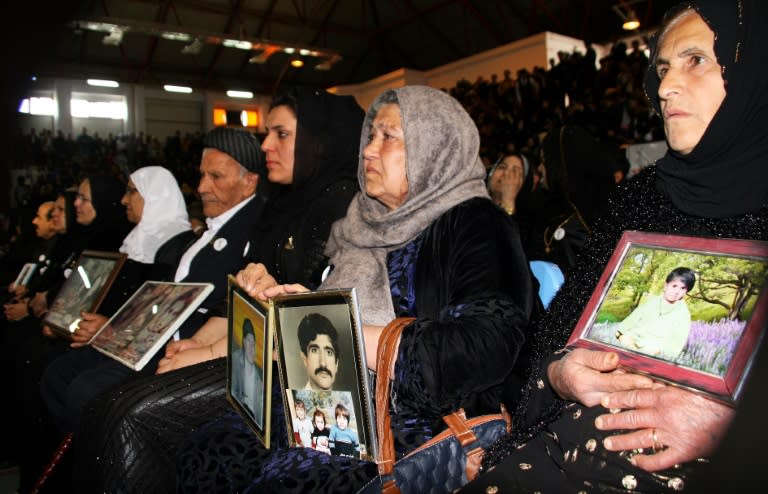Thirty years on, Kurds remember 5,000 gassed at Halabja
Thousands of Iraqi Kurds clad in black and many tearful marked on Friday the 30th anniversary of the Halabja gas massacre that killed some 5,000 people. They died when deadly gas was released on the northeastern Iraqi town by the forces of now executed dictator Saddam Hussein, in what is believed to have been the worst-ever gas attack targeting civilians. The mourners, including some survivors, carried pictures of the victims, most of whom were women and children, as they walked down a red carpet to the Halabja Memorial Monument to lay wreaths for the dead. The families, then gathered in a nearby cemetery where tombstones were covered in the Kurdish red-white-green-yellow flag, to pray for their relatives. Fatima Mohammad, who was 17 when Halabja was gassed with what experts say was mustard gas, is among thousands of wounded survivors. Each day, for the past three decades, she still suffers from "respiratory problems." "I am in pain and I take medicine," she told AFP as she joined the town's now 200,000-strong inhabitants to remember those killed in the gas attack. The attack on Halabja came from the skies after ethnic Kurdish fighters who had sided with Iran in the eight-year Iran-Iraq war withdrew from the rural farming town. It marked the culmination of a ruthless campaign of retribution by Saddam against those seen as siding with his arch-foe Iran. Iraqi and Kurdish officials as well as diplomats based in the country took part in Friday's commemoration. Meanwhile Kurds observed on Friday a minute of silence in tribute for the Halabja dead across Arbil, the capital of Iraqi Kurdistan. Twenty years after the massacre, Saddam's cousin General Ali Hassan al-Majid was sentenced to death for ordering the gas attack. Known as "Chemical Ali" he was executed by hanging in 2010. Three years after he was ousted in a US-led invasion of Iraq, Saddam was hanged in 2006 for the massacre of Shiite villagers.


